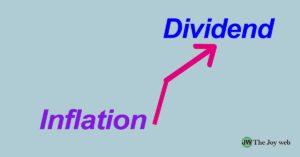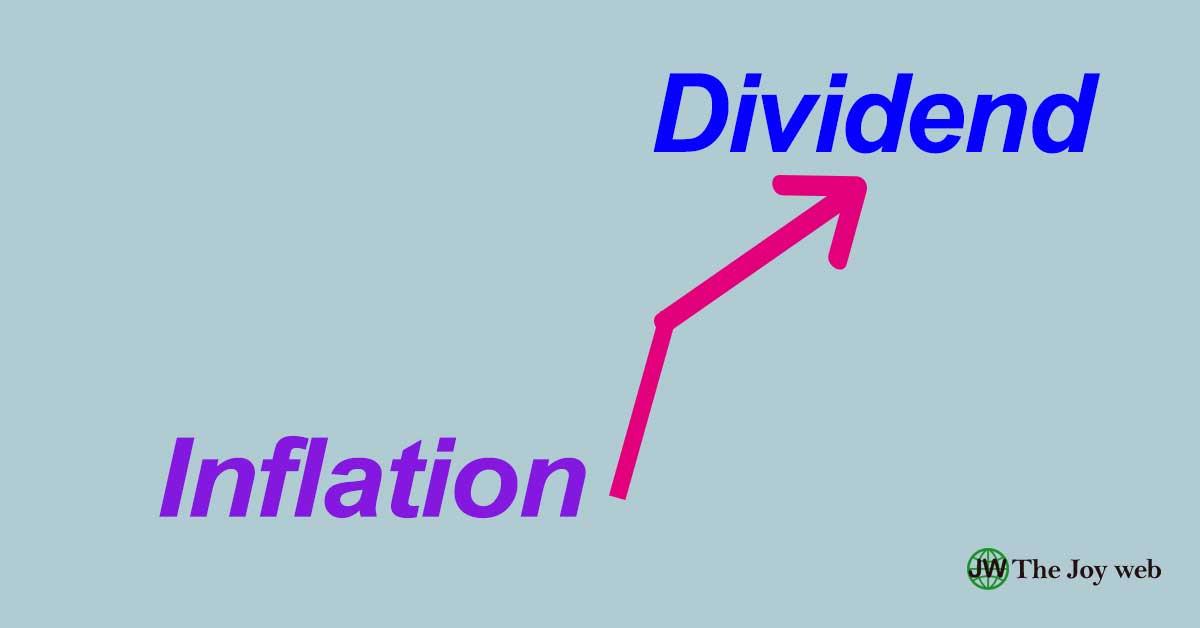Why Investing in Dividend-Paying Stocks is the Best Way to Beat Inflation :

Sure Dividend first released this article on investing in inflation-adjusted dividends. They permitted us to repost the article here.
Have you considered using Dividend investing, a reduced risk technique, to outpace Inflation? The most effective long-term tactics are frequently the simplest ones. Investments ought should be dull and conducive to a good night’s sleep.
Though dividends are a tried-and-true approach, can they help you outpace Inflation?
What Is Dividends Paying Investing?
Purchasing shares of companies that consistently pay above-average dividends constitutes the first step in Dividend investing. Reinvesting dividends to generate even more income is the second component of Dividend investing.
To pay out dividends, money must be earned. Money is king. Many businesses generate significant revenues but little cash flow. As a result, more robust financials probably support businesses that consistently distribute dividends. They are also less dangerous as a result.
Long-term increases in the cost of products are referred to as Inflation because you have to spend more to obtain the same amount back as you would ordinarily, and your overall wealth decreases.
Investing in assets that increase your wealth over time is one method to safeguard yourself. In this way, your wealth can increase during periods of low Inflation, only to have it reduced during periods of high Inflation to pay for expenses.
Also Read : Housing Market Crash Predictions and Trends to Watch in 2022
Why Investing in Dividends Stocks Can Outperform Infla
tion :
First, you may be confident that you will receive a dividend if the company has excellent financials.
This dividend yield, which typically amounts to about 2/3% of the share price, helps you much to counteract the effects of Inflation. (Inflation usually increases by 2/3% annually.)
Second, capital growth is another aspect of Dividend investing. Companies that enhance their dividends annually are rewarded with higher share prices.
You end up with a combination of income growth and share price rise, frequently outperforming inflation increases.
Thirdly, rising Inflation typically translates into rising interest rates. The industries that can absorb cost rises are typically the essentials, like the food and drug industries. These industries specifically offer the most outstanding dividend payments.
Additional Arguments in Favor of Dividend Paying Investing :
In the past, dividend stocks have been less volatile, which makes them less hazardous than other equities that are more growth-oriented (which get severely punished if they produce a profit warning).
You can acquire more shares and increase your income if you reinvest your dividends twice yearly (most corporations pay one modest and one more extensive distribution per year).
Look for firms that pay quarterly dividends to reinvest sooner and increase your dividend income more quickly.
What you should prioritize is:
Look for businesses that have a minimum 10-year history of dividend increases. They can withstand an economic downturn because of this. A “dividend hero” company has increased its Dividend for at least 20 years.
These have a history of success. Hence they are frequently highly regarded. A word of caution: If a dividend hero reduces its Dividend (unfortunately, nothing lasts forever), then its share price will suffer greatly.
A company’s cash dividend payout ratio is another indicator of the payout’s sustainability. This calculates the percentage of remaining cash after all business operating expenses have been paid.
Low dividend payout ratio companies are less likely to continue paying dividends.
Sadly, we must discuss taxes. A dividend investor would be disappointed to learn that income tax is typically higher than capital gains tax. As a result, it’s crucial for your dividend investment plan that you are aware of the withholding tax that applies to US and EU equities.
The withholding tax on EU stocks may be particularly harsh. The IRS (W-8Ben) form, which lowers withholding tax for non-US citizens, is available in the US.
What Investments Are Available?
The FTSE100 stock market in the UK has historically paid significant dividends.
This yield usually ranges between 4 and 5%. The historical dividend yield for the Stoxx 50, the European market, is respectable at about 2/3%.
The USA’s rate of about 5% is appalling. This is because US businesses have a tradition of repurchasing shares rather than paying dividends with their cash.
It is ideal for new investors to concentrate on ETFs while beginning their Dividend investing adventure. A US- and EU-focused version of the SSGA dividend aristocrats State Street offers ETF. These are renowned for their success in generating cash over the years.
Some of the ETFs under the well-known iShares brand are dividend-focused. You can find different dividend-focused strategies for almost every region of the world by searching their website.
You can disperse the source of your Dividend in this way.
Risks of Divindends Paying Investing :
It can be dangerous to concentrate just on dividends. You risk chasing yield, and some businesses have inflated yields. High dividend payers may indicate trouble due to the correlation between share price and yield. The dividend yield trap is what is meant by this.
In essence, a firm with poor prospects would suffer a decline in the value of its stock, falsely inflating its dividend yield (which may sometimes be as high as 10–15% dividend yield!). Such businesses should be avoided.
Be ready for dividend reductions. These are frequently quite painful since businesses wait until the very last minute to make cuts (making the share price punishment all the more extreme).
The issue is that, in addition to losing income, the shares will frequently experience a severe day-to-day sell-off of 10% to 20%. Both income and money have been lost.
A word of caution: Some historically high-paying stocks, like the oil majors, have a track record of reducing dividend payouts. This is due to the oil price cycle, in which a high oil price triggers a recession, which lowers demand. Because of this, businesses have to reduce their dividend payments.
Conclusion of Investing in Dividends Paying Stocks to Beat Inflation :
A tried-and-true technique for building wealth is dividend investment. Using it to fight inflation is wise, but you also need to gauge your expectations. High Inflation is difficult to overcome; all businesses, even those that are professionally operated, will suffer.
By accumulating a steady dividend return over several years, you can outpace Inflation. As a result, when high inflation occurs, the extra money you have made from reinvested dividends in the prosperous years will produce enough for you to continue living your life without worrying too much about rising prices.
